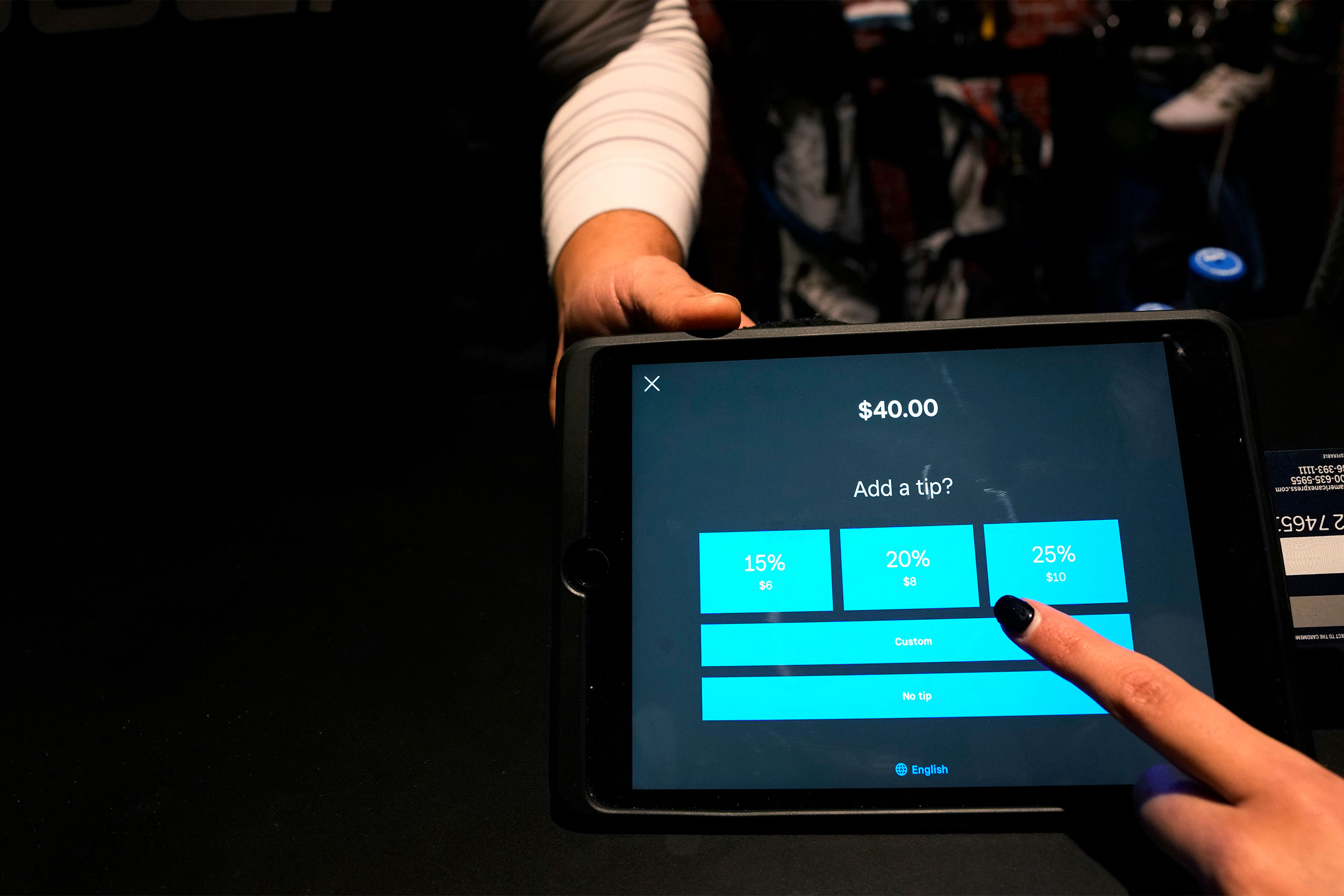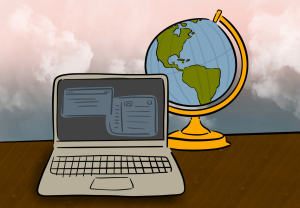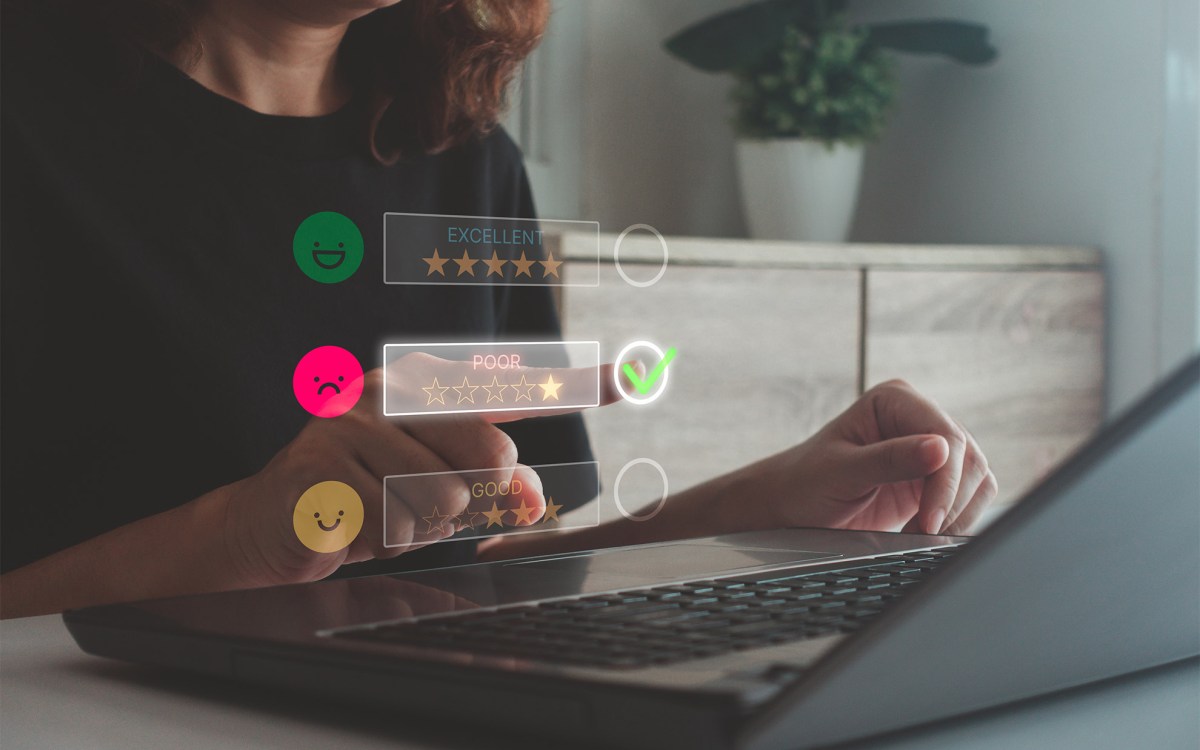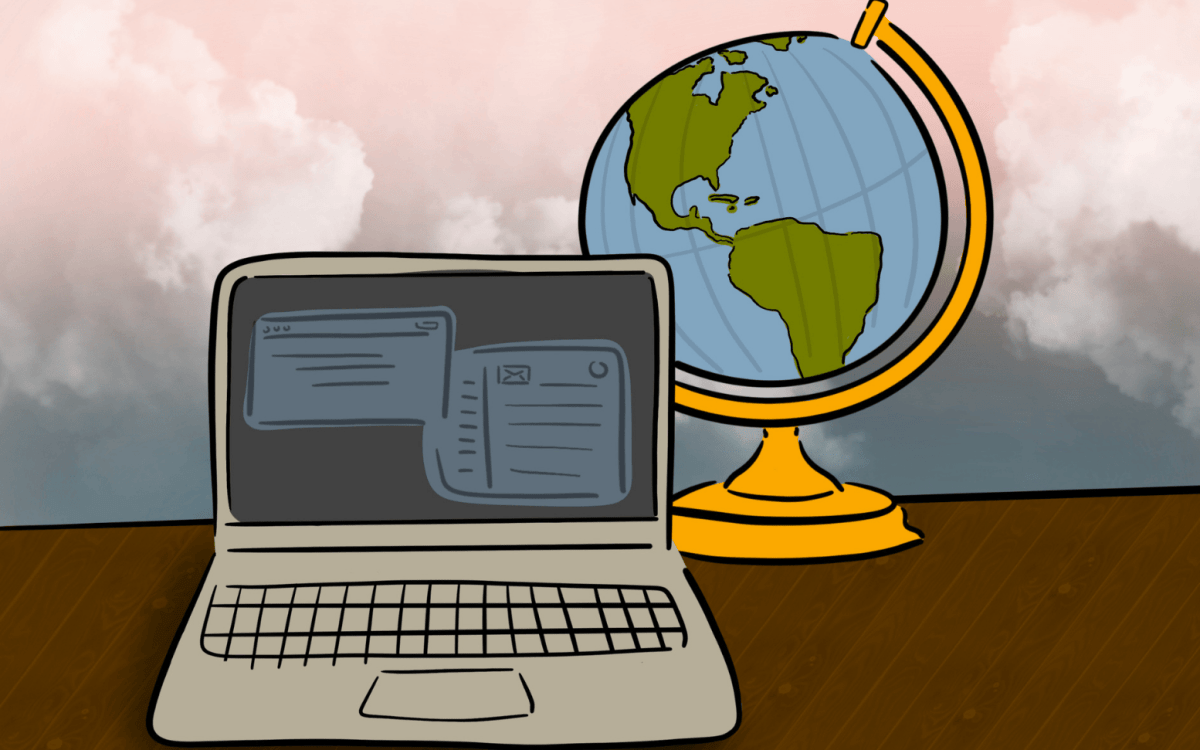
Nam Y. Huh/AP Photo
Confused about changes in tipping customs? You’re not alone.
Customer relations expert says technologies, COVID changed behaviors across the U.S.
If you’ve recently ordered food or coffee on an app, you’re probably familiar with the prompt to tip your barista, delivery driver, or sandwich maker. Or even more commonly, when ordering at a casual dining counter, you’ve been asked to leave a tip on the screen used to process your credit card payment.
But what about after taking a ride-share ride? Or after getting a haircut? Many of those establishments prompt tipping either through their online app or on a tablet at checkout. Have you been surprised by the prompt? You’re not alone.
These new point-of-sale technologies along with shifts brought along by the pandemic have ushered in a changes to the informal customs around who gets tips and how much, according to Jill Avery, senior lecturer of business administration and the Christensen Distinguished Management Educator at Harvard Business School. And Americans are still trying to adjust.
7 in 10 Americans say tipping is expected in more places today than it was five years ago, according to Pew Research Center
According to poll findings released by Pew Research Center in November, among nearly 12,000 U.S. adults, around seven in 10 say tipping is expected in more places today than it was five years ago. Only about a third say it’s extremely or very easy to know whether or how much to tip for different types of services.
“In many establishments, we’re now moving to digital payment systems such as Toast that ask you each time you purchase if you would like to leave a tip and suggest tip amounts,” Avery said. “Some of these are point-of-sale situations where we didn’t traditionally think about tipping 15 percent, such as counter service or delivery of our order after we ordered it on an app.”
She noted that, “In those types of situations, some people merely left spare change or a nominal tip, if they tipped at all, throwing it into a jar on the counter.”
Formerly, tipping was limited to waitstaff at sit-down restaurants, said Avery, an expert in customer relationship management. And, “In the U.S., tips were somewhere in the range of 15 percent for average, 20 percent for good, and 10 percent or less for bad service. That was the expectation up until COVID.”
77% of U.S. consumers tie tipping behaviors to the value of the service rendered, according to Pew
However, “post-COVID,” as businesses came back from pandemic-induced lockdowns, consumer behavior shifted.
“Consumers started to realize the value of waitstaff when the restaurant industry was decimated. People realized how much they loved dining out and eating in restaurants and how much pleasure it brought them,” she said.
Thus, an era of “over-tipping” or tipping in more atypical settings like takeout, began to emerge.
“That was seen as a gesture to thank waitstaff for risking their health by being on the front line during the COVID pandemic, and to recognize that a lot of them didn’t work for six months, a year, a year and a half during the shutdowns. It was like making up for the lack of tipping that we all did while we stuck at home during the pandemic.”
“If I input my order into an app, and I go and pick it up from the counter without any human interaction, should I leave a tip?”
Jill Avery, Harvard Business School
During that same time, she adds, counter service became more prevalent in all kinds of businesses, and the use of non-cash, i.e., paying on tablets or apps, became more prevalent. That has led to situations where “price framing” can nudge consumers into tipping in unaccustomed circumstances or even over-tipping.
“There’s some classic framing effect studies from psychology that show that people perceive a price to be fair or unfair based on what surrounds it,” Avery said.
For example, think about buying wine. If you don’t know what the cost of wine is, you will base your estimate of what is a good deal on what’s on the shelf around it. If the average price of a bottle is $15, you’ll think the wine should cost $15.
“We see those framing effects in practice when we go to checkout using apps that suggest tip amounts. By moving the suggested tip ranges away from our historical expectations, i.e., 10 percent, 15 percent, 20 percent as tip ranges, the app suggests a tip 20 percent, 25 percent, 28 percent. By moving the entire set of tips up, they reset people’s expectations of what a ‘proper’ tip should be,” she said. “Many people don’t want to be perceived as under-tipping or be perceived as cheap. It makes us feel guilty if we go in at the bottom of the range, particularly if we believe everyone else is tipping higher than us.”
But Avery said that with rising inflation and higher prices across sectors, consumers are questioning higher tips, and whether they should be tipping at all.
“Asking for higher tip levels felt appropriate during COVID as we understood or could rationalize the ‘why’ behind them,” she said. “It feels less fine in the current environment and could be perceived by consumers as greedy.”
She went on to say that, “Because of inflation, the cost of the cup of coffee or the cost of the restaurant meal has increased significantly. So if we take a 10 percent price increase, a 20 percent price increase on the cost of the good, and then put a 20 percent or 25 percent, or even 28 percent tip on top of that, the price differential between what we used to pay to eat out and what we pay now feels enormous to today’s consumers.”
Not to mention that most consumers — 77 percent, according to Pew — tie tipping behaviors to the value of the service rendered, and over time they have not necessarily seen better service.
“If consumers believe that service quality has gone down post-COVID, then it’s going to make it even more dissonant to pay a higher tip. Particularly for counter service. If I input my order into an app, and I go and pick it up from the counter without any human interaction, should I leave a tip?” Avery said.
But will that mean there is change on the horizon?
“We basically saw increases in e-commerce penetration among people happen in months that we expected to happen over 10 years. So I think any crisis that disrupts basic consumer behavior allows for rapid consumer behavior change. But, when the crisis is over, we watch to see if consumers will fall back to their previous behaviors,” she said. “They likely will unless there’s a significant driving force keeping them in the new behavior or a tremendous value to them from continuing with it.”
Avery added that she doesn’t think that’s likely on the tipping side. But businesses that want to get ahead of the curve can make changes.
“If you’re concerned about your consumers’ reactions and want to preserve your customer relationships, instead of putting suggested tip ranges that seem too high or exploitative to consumers such as 20 percent, 25 percent, and 28 percent, proprietors can use an open-ended tipping question format. Just ask, ‘Would you like to leave a tip? How much would you like to leave?’ and let the consumer decide what’s appropriate given the level of service they’ve received,” she suggests.





